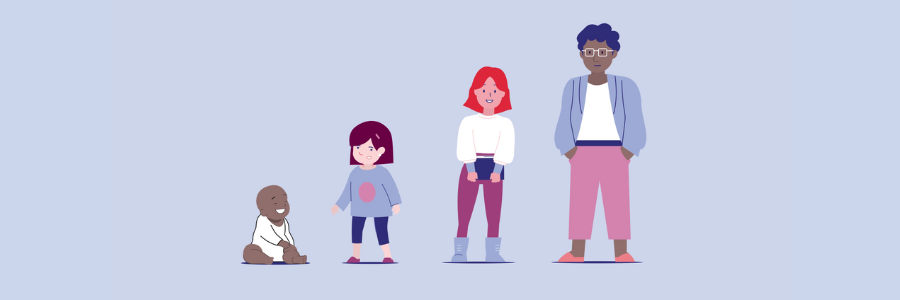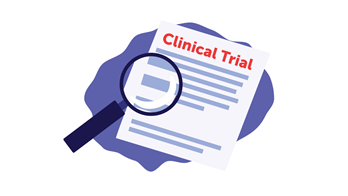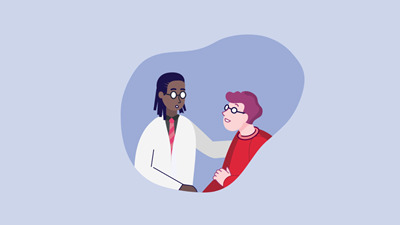How to Be a Champion for Health Literacy
Ali Kujawski, MPH - October 25, 2022
During Health Literacy Awareness Month, learn how you can help others understand the health information they need.

October is Health Literacy Awareness Month! We are sharing insights on what health literacy means, why it is important, and how ASGCT members can join in the effort to be a champion of health literacy.
What is health literacy?
As of August 2020, there are now two definitions set by the Centers for Disease Control and Prevention (CDC) created with the Healthy People 2030 initiative.
-
Organizational health literacy is the degree to which organizations equitably enable individuals to find, understand, and use information and services to inform health-related decisions and actions for themselves and others
.
What is the impact?
Nearly nine out of 10 adults struggle to understand and use health information that has unfamiliar or complex terms. This results in higher than necessary disease and death, with an estimated 1 million preventable hospital visits and a cost of more than $25 billion a year to the health care system
. It seems staggering, even unreal, that the majority of U.S. adults are impacted by inadequate health  literacy. It is important to understand that just because a person can read well or interpret numbers in their day-to-day life does not mean they will not face health literacy concerns. Health literacy can impact people who are trying to understand a disease diagnosis with new medical terms, learning about the biology of their bodies, or evaluating the risks and benefits of a treatment for themselves or a loved one’s safety. Understanding this information can also be affected if a patient is struck with unexpected or emotional news, or when they are trying to learn a complex regimen to manage a disease.
literacy. It is important to understand that just because a person can read well or interpret numbers in their day-to-day life does not mean they will not face health literacy concerns. Health literacy can impact people who are trying to understand a disease diagnosis with new medical terms, learning about the biology of their bodies, or evaluating the risks and benefits of a treatment for themselves or a loved one’s safety. Understanding this information can also be affected if a patient is struck with unexpected or emotional news, or when they are trying to learn a complex regimen to manage a disease.
Opportunity for change
Health equity is the attainment of the highest level of health for all people, and when everyone has the opportunity to be as healthy as possible
. All organizations, along with the medical and scientific professionals within them, must acknowledge their responsibility to address health literacy. For example, choosing to use jargon and complex explanations is an act of exclusion. In other words, it will exclude the majority of people who are not within that area of expertise but need the information to make decisions for their own or a loved one's health. While this might be an unconscious decision it is also part of the problem. It requires a conscious effort to provide clearer communication. This will build trust with an audience and, with that trust, people will be more likely to follow a recommendation, participate in shared decision making, and improve their health.

Simple steps you can start taking today!
A little bit of awareness, time, and effort can go a long way to begin making change right at your own keyboard. When you are preparing a message, materials, or reviewing what someone else has prepared, take a moment to read with the following questions in mind:
Pro tip – defining terms (by not using more complex terms!) can empower a person and enhance their understanding.
Pro tip – when you come across a word you want to simplify but are not sure how, you can right click in Word and select “Synonyms” to find a better option.
Pro tip – headings, bolding, shorter paragraphs, and bullet points are your friend.
Use common, everyday language. This can be easier said than done, so try putting yourself in the other person’s shoes. If the person does not encounter information related to something like gene therapy every day or have special experience or education on it, would this make sense to them? If not, then challenge yourself to explain it more simply, remove unnecessary words, or compare it to something more familiar.
Keep it at a “need to know” level. There is so much information on gene and cell therapies, and in the professional setting the details can be crucial to a conversation or decision. However, when it comes to an audience that is new to this information those details can bring extra noise that drown out the main message. Always consider: How does this affect the person, their understanding, decision making, and health and safety?
Use an active voice. Put verbs first to make a sentence more direct, which will guide a person to their next step. Here's an example:
Instead of: If you are considering a clinical trial speak with your primary provider.
Be direct: Speak with your primary provider about a clinical trial.
Get feedback. An easy way to ensure clear communication is to share the content or message with a member of the target audience, or even a colleague or family member.
Pro tip – remember there is no ONE right way to say something. What is important is that the message is consistent, clear, and available to the audience.
What is ASGCT doing to champion health literacy?
ASGCT’s Patient Education Program, consisting of 30+ pages of resources, is committed to providing accurate and accessible information. The goal is to provide free resources that can help patients, caregivers, and advocates make informed decisions by understanding the basics of gene therapy, how different disease treatments work, and the clinical trials process. The staff at ASGCT and the Patient Outreach Committee use the practices mentioned above to clearly communicate these complex concepts.
 Through this commitment to providing accurate and reliable information, we recently went through an entire review and redo of three of our main Gene Therapy 101 units being released soon:
Through this commitment to providing accurate and reliable information, we recently went through an entire review and redo of three of our main Gene Therapy 101 units being released soon:
Gene Therapy Basics on October 26
Gene Therapy Approaches by Thanksgiving
Clinical Trials Process by Thanksgiving
We also have monthly Lunch & Learns available live and on demand to review gene therapy concepts, disseminate more information to the community, and allow an opportunity for questions!
Ali is the Senior Outreach Manager at ASGCT.